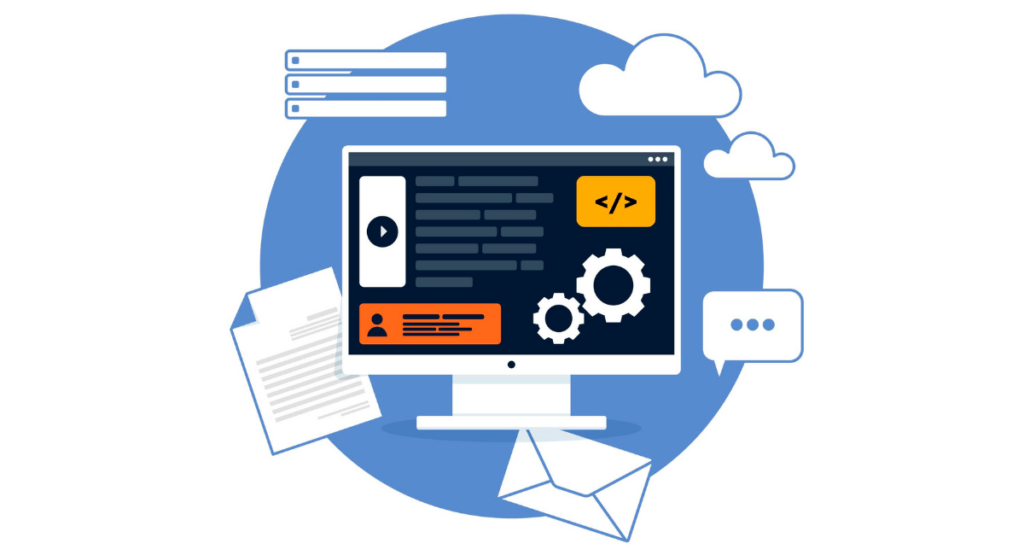It is a portion of software development that guarantees the smooth running of applications without any bugs or problems.
Functionality testing of software applications is done with the intent of determining whether the developed software has met specified requirements, identifying defects, and making sure that the product does not contain any defect to produce a quality product.
It can be manual or through automated techniques. The important thing is finding errors, lapses, or missing requirements against the actual requirements.
QA through testing is of prime importance for any software development company big or small and for any small data-driven startup.
Definition of Software Testing

Explanation of Software Testing
It refers to the evaluation process of software to detect differences between given input and expected output. It involves the process of running the software under controlled conditions, examining, and understanding the behavior of the program.
This is a systematic method to identify and resolve issues and bugs before the software comes into operation. Basically, software testing ensures that the developed software product is safe and executes the anticipated operations in accordance with design specifications.
It is like a quality assurance practice that provides reliable and effective software products to users.
Types of Software Testing
Unit Testing
Unit testing is one of the primary phases of software testing whereby independent units that can be an individual component or modules of software are tested. This phase aims at verifying whether each module or unit of the code does what it is purported to do.
It is usually conducted by the developers themselves or by their peers. Sometimes, independent testers might also be involved in the process. This sort of testing is conducted by tools such as JUnit for Java applications and NUnit for the NET frameworks.
This testing is done because it eventually makes modules easy to debug and freely ensures the quality of modules before the integration process with other parts of the application.
Integration Testing
Integration testing is done after unit testing and offers the combining of individual units of software and their testing as one group, which tends to reveal faults in interaction between the integrated units.
Test drivers and test stubs are used to assist in integration testing. Integration tests can be conducted in several ways including the Big Bang approach, where all units are combined and tested at once, or the Incremental approach, which can be executed in either a Top-Down or Bottom-Up manner.
This method checks data flow between modules and is key to catching issues that unit testing might miss.
System Testing
System testing is a high-level software testing practice where the testing involves an integrated and complete software product. In this kind of testing, it would be ensured that all specified requirements are met and the software is roped for operational deployment.
It looks at the functionalities, features, performances, and behavior of a product under different conditions. This is usually carried out by a team and includes simulations of real-life scenarios concerning the general behavior of the software.
This constitutes the first level of testing, where the testing of the software happens as an integrated whole rather than in pieces.
Acceptance Testing
Acceptance testing, otherwise known as user acceptance testing (UAT), is the last phase of the software testing process before its final release into the market or delivery to the customer.
This testing ensures the software meets all business requirements and is ready for operational use. The acceptance testing is done by the end-users or clients, not by programmers or testers.
This testing helps detect issues and bugs that may not have been previously uncovered during the earlier phases of testing. It gives the final verification that the software meets the agreed-upon specifications and could involve beta testing, which allows for modifications before the final release.
Software Testing Tools

Introduction to Testing Tools
software testing tools are extremely necessary for ensuring the efficiency, functionality, and ruggedness of software products. These tools should be such that they automate the process of checking the actual input of software with the predicted output under different conditions.
Some of the major benefits of these tools include reduction in testing time, accuracy in defect tracking, consistency in test case development, and finally, better quality software products released fast.
Among such an extensive list of tools available to choose from, the right choice could drastically make a difference in the quality and scalability of the software under test.
Popular Testing Tools
There are many software testing tools available in the market, which all serve the needs of testing, individually. Following are the most popular ones:
1. Selenium: It is highly in use for the automation of web browsers and facilitates multiple languages and frameworks, thereby becoming one of the prime options to test web applications.
2. QTP/UFT (Unified Functional Testing): UFT has wide application in functional and regression test automation because it is very user-friendly. It integrates well with test management tools, especially on a Windows-based environment.
3. JIRA: This is essentially a bug tracking tool. JIRA's features are often combined with other test management solutions to manage the state of defects and track effective inter-team communication.
4. TestComplete: It supports various scripting languages and offers capabilities for testing desktop, mobile, and web applications, which makes TestComplete a versatile tool for many testers.
5. LoadRunner: This tool is crucial for understanding and determining system behavior and performance under load. It is highly effective in identifying and diagnosing application bottlenecks before production deployment.
These tools, and many others like them, are crucial for organizations aiming to improve their software quality through rigorous testing.
They not only automate what would typically be a manual process but also provide detailed insights and analytics that guide further development and improvement.
Importance of Quality Assurance in Software Testing
Quality Assurance in software testing is way much more than a phase or any easy step of this development cycle. It is actually one step toward overall process management.
Which allows one to ensure the software product meets the desired standards and customer expectations before its exposition to the market.
Being so, QA has a very significant role in managing and preventing risks, hence the success of the project itself.
The importance of QA extends beyond just finding defects before market release; it involves:
- Planning and Documentation: By setting up clear processes and standards, QA helps maintain a consistent approach to testing, allowing for structured and predictable outcomes.
- Identifying Potential Risks Early: QA methodologies like risk-based testing can help teams prioritize testing based on the potential risk and impact, thus allowing early identification and mitigation of critical issues.
- Customer Satisfaction: The end goal of QA is to uphold the software quality that exceeds customer expectations and fits the user requirements. High-quality products naturally result in higher customer satisfaction.
- Cost Efficiency: Through early detection of defects and continuous testing, QA helps in reducing the cost of future fixes and maintenance. It’s notably less costly to fix issues earlier in the lifecycle than it is post-launch.
The implementation of effective QA processes enables companies to uphold a high standard in the rapidly evolving landscape of software development, ensuring both product robustness and reliability.
By integrating comprehensive testing and QA procedures, businesses can improve their product offerings, stay competitive in the market, and build a strong reputation for quality.
Testing Techniques in Software Development
Testing techniques in software development are important to be used for the quality and functionality assurance of software.
These methods make it possible to track bugs and provide assurance in meeting all the requirements of users to ultimately launch a successful, error-free product.
Static Testing
The first phase of quality assurance is static testing, which can be defined as the review of the code before it is executed. This process may include techniques such as code inspection and walkthroughs whereby developers go through each other's code to look for mistakes.
Still, other tools may be automated to check the code for common mistakes or compliance with coding standards. Through static testing, a developer is able to identify errors very early in the development cycle, thus substantially reducing development costs and time.
Dynamic Testing
Compared to static testing, dynamic testing is the process of code execution and determination of the behavior of software under different conditions. This type can then be divided into two categories:
- Functional Testing: This technique is meant to see whether the software is working as per the specified requirements. It consists of various methods such as unit testing, integration testing, system testing, and acceptance testing.
- Non-functional Testing: Unlike functional testing, which deals with the 'what' in the realm of software behaviors, non-functional testing deals with the 'how' of external factors on the software, including performance, scalability, usability, and security when using the software.
All of these are techniques in an integral testing plan for software. Only by effectively applying all these techniques can a developer be certain that software will not only work correctly but also meet expectations with respect to performance and compliance and eventually result in higher user satisfaction and improved market success.
Book a Demo and experience ContextQA testing platform in action with a complimentary, no-obligation session tailored to your business needs.
Conclusion
Software testing is one pillar in the fast-changing technological world that ensures reliability, security, and high performance of software applications.
Developers and testers armed with knowledge of types of software testing, tools, and effective techniques of testing are better placed in improving the quality of their products, going on to improve the user experience.
Be it through automated testing tools or manual testing techniques, the gist lies in the detection and fixation of bugs before end-users receive the software, thereby safeguarding the functionality and the name attached to the software.
Practice these and more to grow in quality, trust, and satisfaction with users of your software.
Also Read - What is Integration Testing? Definition, How-to, Examples
